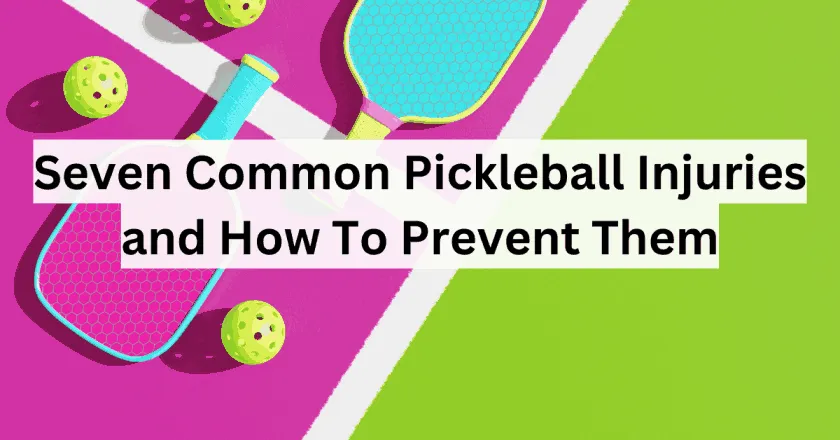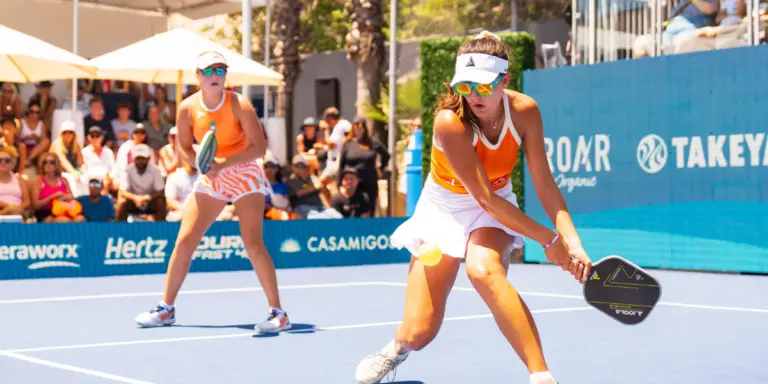Discover the most common pickleball injuries and their prevention techniques. Learn how to keep yourself safe and injury-free while enjoying the fast-paced and exciting game of pickleball.
Table of Contents
Most Common Pickleball Injuries
Pickleball, a fast-paced and increasingly popular racquet sport, combines elements of tennis, badminton, and table tennis, offering players of all ages and skill levels a dynamic and enjoyable experience. However, like any sport, pickleball carries a risk of injury, particularly as players engage in rapid movements, quick direction changes, and repetitive motions. Understanding the most common pickleball injuries is essential for both seasoned players and newcomers alike, as it allows for proactive measures to prevent injuries and promote safe and fulfilling gameplay. Let’s look at the most common pickleball injuries and how to prevent them.
1. Ankle Sprains
Ankle sprains are one of the most common pickleball injuries. They occur when the ligaments in the ankle are stretched or torn due to sudden twisting or rolling motions. This can happen while changing direction quickly or landing awkwardly after a jump. Wearing supportive footwear and performing ankle-strengthening exercises are essential to prevent ankle sprains.
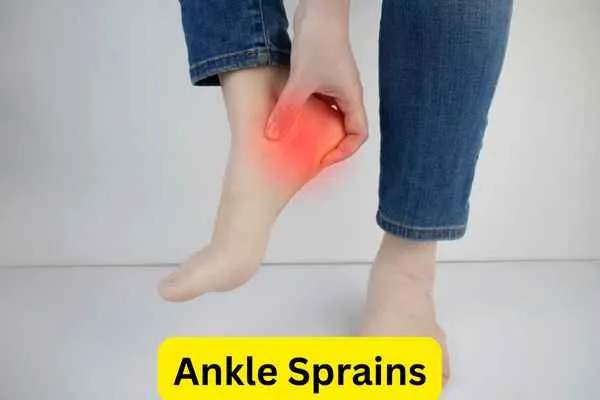
2. Pickleball Elbow
Tennis elbow, or lateral epicondylitis, is another prevalent injury among pickleball players. An overuse injury brings on the soreness and inflammation of the forearm tendons. The repetitive pickleball strokes can strain the forearm muscles and lead to this condition. Using proper technique, warming up adequately, and incorporating forearm strengthening exercises can help prevent tennis elbow.
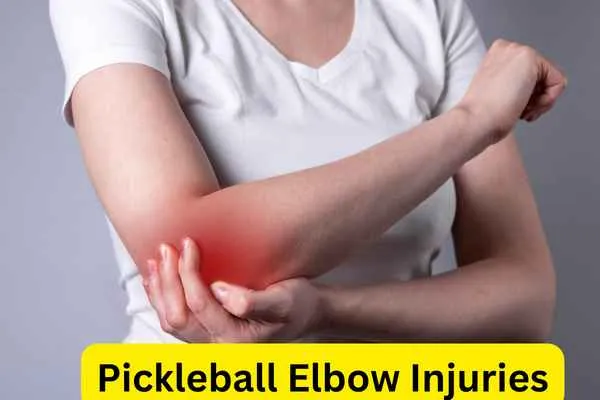
- Zimmer Biomet APP NYC Open 2025— Results & Recap
- New Jersey 5s Defeat Ranchers 3-1 to Conclude MLP Austin
- Pickleball Paddle Eraser: The Simple Tool to Keep Your Paddle Clean
- MLP Champions Dallas Flash Improve to 8-0 with Statement Win Over 5s
- Texas Ranchers Hand Orlando Squeeze Stunning 4-0 Defeat at MLP Austin
3. Shoulder Injuries
The shoulder joint is susceptible to injuries in pickleball, mainly rotator cuff tears and impingements. The repetitive overhead motions of serving and smashing can stress the shoulder tendons and muscles. It is crucial to maintain proper form, gradually increase the intensity of play, and engage in shoulder-strengthening exercises to reduce the risk of these injuries.
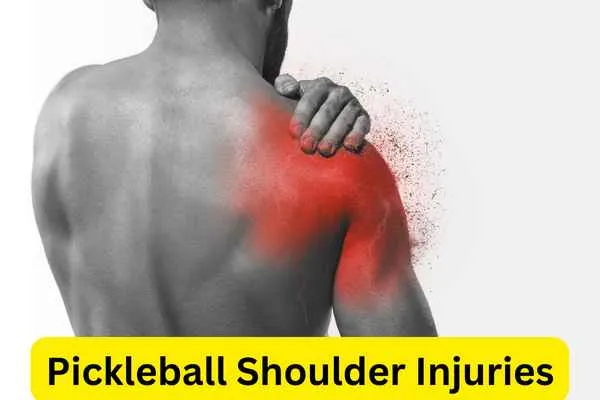
4. Rotator Cuff Tendonitis
The plight of rotator cuff tendonitis, a prevalent affliction, targets the shoulder with a vengeance, unleashing formidable agony and unease. This condition materializes when the tendons and muscles enveloping the rotator cuff undergo inflammation or irritation, frequently stemming from ceaseless overhead movements or an undue burden placed upon the shoulder joint.

5. Knee Strains
Pickleball requires constant movement and agility, which can strain the knees. Sudden stops, pivots, and lateral directions can lead to knee strains, including ligament sprains or meniscus tears. Wearing knee braces, practicing proper landing techniques, and incorporating exercises that target the quadriceps and hamstrings can help prevent knee injuries.
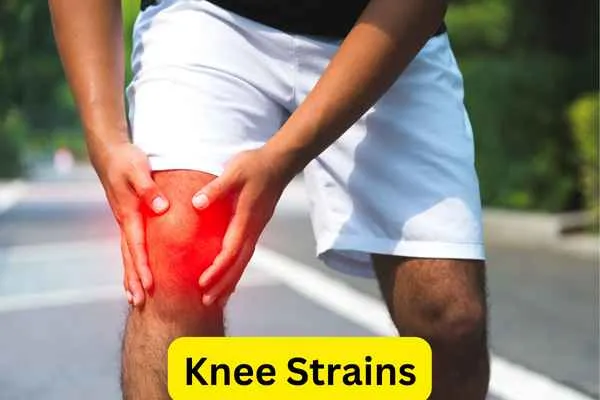
6. Wrist Injuries
The repetitive nature of gripping the pickleball paddle and performing wrist movements can result in wrist injuries, such as sprains or tendonitis. Players should ensure they have the correct grip size and avoid excessive strain on the wrists. Wrist stretches and strengthening exercises can also help in preventing these injuries.
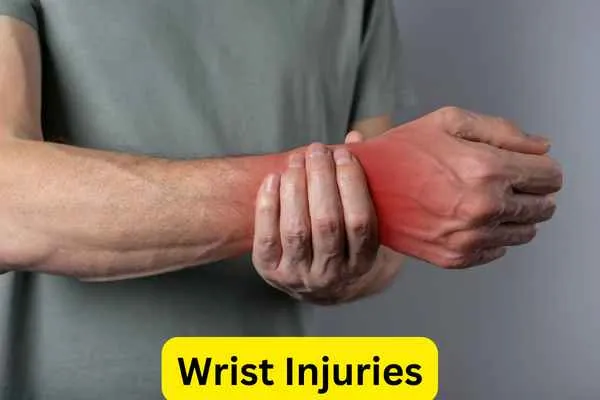
7. Muscle Cramps
Muscle cramps can occur during heated pickleball matches, especially when it’s hot and muggy outside. Dehydration, electrolyte imbalances, and improper warming up are just a few causes of these pains.
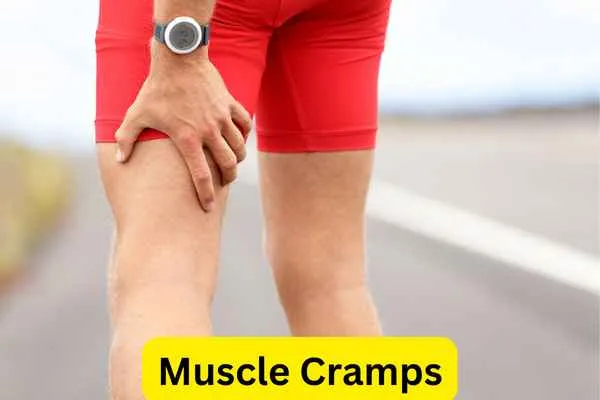
Strategies for Injury Prevention
To reduce the risk of common pickleball injuries, players should adopt various preventive strategies:
1. Importance of Proper Warm-up
A thorough warm-up routine that includes dynamic stretches and light exercises can prepare the body for the physical demands of pickleball and reduce the likelihood of injuries.
2. Strengthening Exercises
Regular strength training exercises targeting the major muscle groups used in pickleball can enhance overall stability, balance, and injury resistance.
3. Wearing Protective Gear
Appropriate protective gear such as supportive footwear, knee braces, and wrist supports can provide added protection to vulnerable areas and minimize the risk of injuries.
4. Maintaining Proper Technique
Learning and practicing proper pickleball techniques, including proper stroke mechanics and body positioning, can help reduce the strain on joints and muscles.
5. Listening to Your Body
Being mindful of any discomfort or pain during play and taking appropriate breaks or seeking medical attention is crucial for injury prevention.
6. Rest and Recovery
Giving your body enough time to rest and recover between pickleball sessions is crucial for healing and rejuvenation. This practice helps to minimize the risk of overuse injuries.
Conclusion
Pickleball is a wonderful sport that promotes social interaction and physical activity. We often overlook the importance of stretching and strengthening until we experience an injury. Instead of waiting for the damage to occur before taking care of our bodies, utilizing the above tips and proactively working toward injury prevention is beneficial.
How can I prevent ankle sprains in pickleball?
To prevent ankle sprains, wear supportive footwear and perform ankle-strengthening exercises. Additionally, be cautious while changing direction quickly or landing after a jump
What is tennis elbow, and how can I avoid it in pickleball?
Tennis elbow, or lateral epicondylitis, is an overuse injury that causes pain in the forearm tendons. To avoid it, use proper technique, warm up adequately, and incorporate forearm strengthening exercises.
Are there any specific exercises to strengthen the shoulders for pickleball?
Yes, exercises like shoulder presses, lateral raises, and external rotations can strengthen the shoulder muscles and reduce the risk of injuries in pickleball.
Can wearing knee braces help prevent knee strains in pickleball?
Knee braces can provide added support and stability to the knees, reducing the risk of strains and other knee injuries.
Which injury is most frequently observed in pickleball?
Injuries affecting the lower extremities, such as ankles and hips, are the most commonly reported. The repetitive twisting and bending movements involved in pickleball can also lead to discomfort in the lower back.
Is pickleball considered a high-risk sport?
Pickleball does not pose a greater risk of injuries than other sports. He highlights several contributing factors to this worrisome trend, including the recent surge in popularity, the average age of participants, and the sport’s accessibility.
